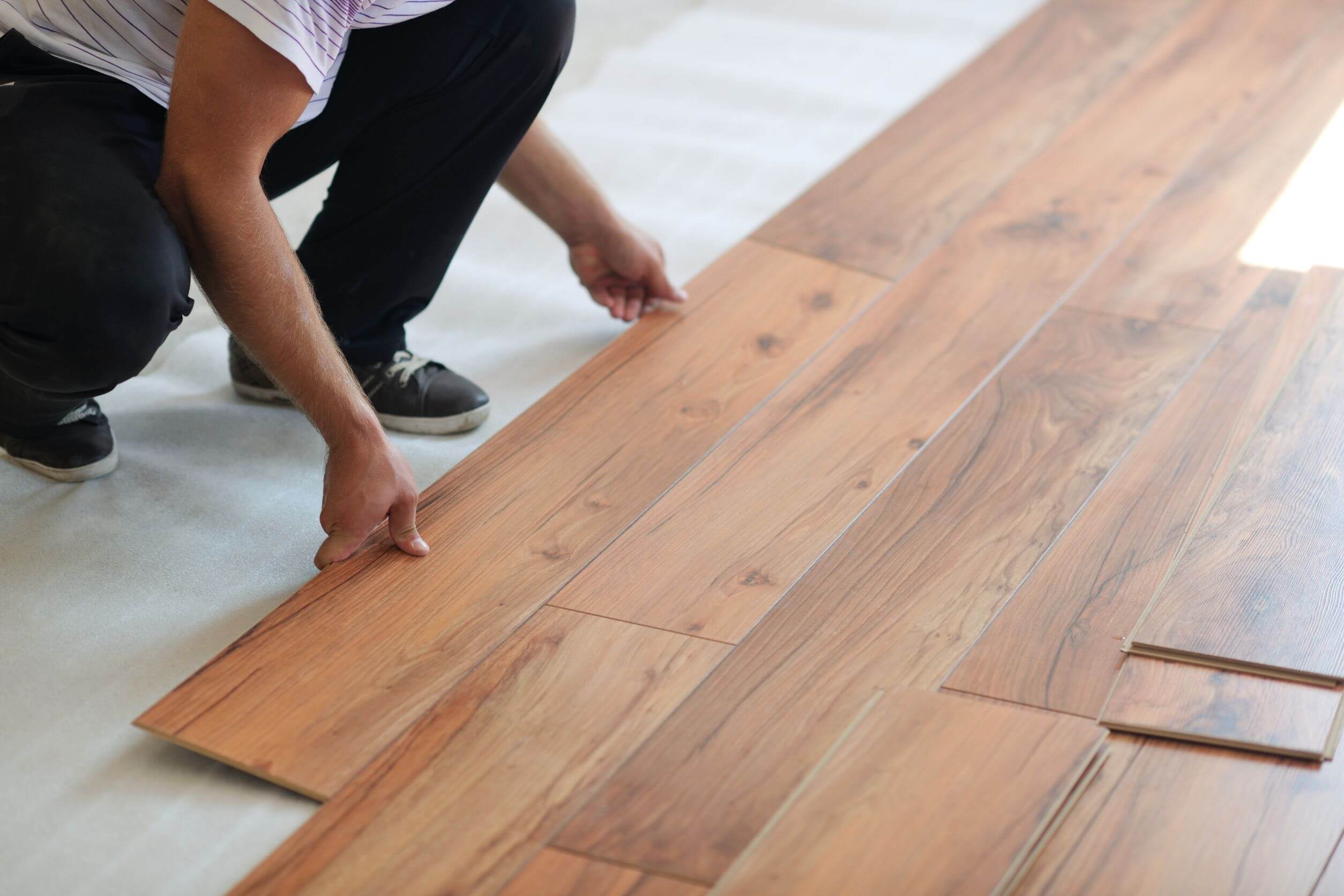Replacing old flooring is a significant home improvement project that can dramatically improve the aesthetics, functionality, and value of your home. Whether you’re removing outdated carpet, worn-out vinyl, or damaged wood floors, upgrading to modern, durable options such as luxury vinyl flooring or engineered flooring can transform your space.
If you’re in Ontario and considering a flooring upgrade, this guide will provide you with practical tips for removing old flooring and choosing the best replacement materials. With insights from Dk Flooring Expert, you’ll learn about the benefits of various flooring options, like waterproof laminate flooring and oak hardwood flooring, along with step-by-step instructions for a successful installation.
Why Replace Your Old Flooring?
Before diving into the details of how to remove and replace old flooring, it’s important to understand why you should consider upgrading your flooring in the first place. Here are a few reasons why homeowners in Ontario opt for new flooring:
- Increased Home Value: New flooring, especially high-quality options like hardwood or luxury vinyl, can significantly increase the resale value of your home.
- Improved Aesthetics: Replacing outdated, worn, or damaged flooring can instantly modernize and refresh your home’s appearance.
- Better Functionality: Old flooring may have become uneven, slippery, or hazardous, making your living space less functional. Replacing it with durable, safe materials can improve both comfort and safety.
- Enhanced Durability: New flooring options, like engineered and luxury vinyl, offer enhanced durability, meaning they can withstand daily wear and tear much better than older materials.
Once you’ve decided to replace your flooring, the first step is removing the old materials.
Steps for Removing Old Flooring
Removing old flooring requires a combination of preparation, the right tools, and a bit of patience. Here’s how to get started:
A. Preparation and Safety
Before you begin tearing out your old flooring, it’s crucial to take safety precautions and properly prepare the area. Here’s what to do:
- Clear the Room: Move all furniture, rugs, and decor out of the room. You’ll need a clear workspace to efficiently remove and replace your old flooring.
- Turn Off Utilities: If you’re removing flooring from a bathroom, kitchen, or laundry room, make sure to turn off water lines and electrical appliances to prevent accidents.
- Wear Protective Gear: Equip yourself with gloves, safety goggles, knee pads, and a dust mask. Removing flooring can kick up dust, debris, and even harmful materials, especially if you’re working with older homes that may contain asbestos.
B. Choose the Right Tools
Depending on the type of flooring you are removing, you’ll need different tools. Some common tools include:
- Pry Bars: For removing nails and lifting up flooring materials.
- Utility Knife: For cutting through carpet, vinyl, or linoleum.
- Floor Scraper: To scrape away adhesive or remnants of old flooring.
- Power Drill: If screws are used to hold down your old flooring, a drill will make removal easier.
C. Removing Different Types of Flooring
- Carpet Removal: Begin by cutting the carpet into manageable strips using a utility knife. Start at one corner of the room and pull the carpet up, being careful to remove the tack strips and staples holding it in place. Dispose of the carpet pieces and thoroughly clean the subfloor beneath.
- Vinyl Flooring Removal: Removing vinyl flooring can be more labor-intensive due to the adhesive used to hold it in place. Use a utility knife to cut the vinyl into sections, then pry it up using a floor scraper or pry bar. You may need to use an adhesive remover to clean off the subfloor.
- Hardwood Flooring Removal: If you’re removing old hardwood flooring, it may be glued or nailed down. Use a pry bar to carefully lift the boards. If they are nailed, work slowly to avoid damaging the subfloor. You can reuse nails or screws from custom hardwood flooring if you plan to salvage any of the material.
- Laminate Flooring Removal: Laminate flooring is often installed as a floating floor, which means it is not directly glued or nailed down. This makes removal relatively simple. Just lift the planks using a pry bar, starting from one end of the room. However, if it’s glued down, you may need additional tools to scrape it up.
After removing the old flooring, inspect the subfloor for damage. If it’s in poor condition, you may need to repair or replace sections before installing new flooring.
Choosing the Best Replacement Flooring for Homes
With the old flooring out of the way, it’s time to choose a new material that fits your lifestyle and aesthetic. Ontario homes are subject to specific climate challenges, such as humidity and temperature fluctuations, so choosing a durable and moisture-resistant option is crucial.
Here are some top flooring materials that Dk Flooring Expert recommends:
A. Hardwood Flooring
Hardwood flooring remains one of the most popular choices due to its timeless beauty and durability. You can opt for a variety of wood types, including oak hardwood flooring and maple hardwood flooring, each offering unique grain patterns and color tones.
- Pros: Adds warmth, elegance, and value to your home; durable and long-lasting; can be refinished multiple times.
- Cons: Expensive; prone to damage from water and moisture, making it less ideal for bathrooms and basements.
- Tip: Consider installing hardwood flooring in living rooms or bedrooms for a classic, luxurious feel.
B. Engineered Flooring
Engineered flooring is a more affordable alternative to solid hardwood, offering similar aesthetic appeal but with added durability and water resistance. It’s constructed with a plywood base and a thin layer of real wood veneer on top.
- Pros: More resistant to moisture and temperature changes; looks like real wood; less expensive than traditional hardwood.
- Cons: Can’t be refinished as many times as solid hardwood.
- Tip: Engineered flooring is a great choice for Ontario homes, as it handles humidity fluctuations better than solid wood.
C. Luxury Vinyl Flooring
Luxury vinyl flooring is another excellent option for homeowners seeking style, durability, and water resistance. It’s available in a wide range of designs, including styles that mimic wood, stone, or tile. Luxury vinyl is highly durable and can withstand moisture, making it ideal for kitchens, bathrooms, and basements.
- Pros: Waterproof; affordable; easy to install and maintain; available in many styles.
- Cons: Can’t be refinished like hardwood; may not add as much value to the home as natural materials.
- Tip: Use luxury vinyl in high-traffic areas or rooms prone to moisture, such as kitchens and bathrooms.
D. Waterproof Laminate Flooring
Waterproof laminate flooring offers the appearance of hardwood while being far more resistant to water damage. It’s constructed with a high-density fiberboard core that prevents water from seeping in, making it ideal for areas like kitchens, laundry rooms, or basements.
- Pros: Affordable; easy to clean; water-resistant; available in a wide variety of wood-like finishes.
- Cons: Doesn’t have the same warmth and feel as real wood.
- Tip: If you love the look of wood but need the water resistance of vinyl, waterproof laminate is a great compromise.
Tips for Installing New Flooring
After selecting your preferred flooring material, the next step is installation. While you can hire professionals, installing certain types of flooring (like laminate or luxury vinyl) can be a DIY-friendly project. Here’s how to ensure a smooth installation process:
A. Prepare the Subfloor
- Check for Uneven Areas: The subfloor must be clean, dry, and level before installation. Use a leveling compound to smooth out any dips or uneven spots.
- Repair Damage: If there’s any structural damage to the subfloor, such as rot or cracks, repair it before proceeding with the installation.
B. Acclimate the Flooring
Before installation, allow the flooring to acclimate to the room’s temperature and humidity. This step is especially important for wood-based products like engineered flooring and hardwood flooring. Leave the flooring in the room for at least 48 hours to adjust to the environment.
C. Follow Installation Instructions
Each flooring material has specific installation requirements:
- Hardwood and Engineered Flooring: These are typically nailed, stapled, or glued down. Ensure you follow the manufacturer’s guidelines for proper spacing and securing.
- Laminate and Vinyl Flooring: These materials often feature a click-and-lock installation system, which means they float over the subfloor without the need for glue or nails. Just be sure to leave an expansion gap around the edges to allow for natural movement.
D. Finishing Touches: Custom Stairs and Stairs Tread and Riser
Don’t forget about your staircase! If you’re replacing flooring in a hallway or near stairs, consider upgrading your custom stairs and stairs tread and riser to match the new flooring. This creates a cohesive look throughout your home and adds to the overall aesthetic appeal.
Post-Installation Care and Maintenance
Once your new flooring is installed, maintaining it properly will ensure its longevity and beauty for years to come. Here are some care tips based on your chosen flooring material:
- Hardwood and Engineered Flooring: Clean spills immediately to avoid water damage. Regularly sweep or vacuum to remove dirt, and use a wood-friendly cleaner for mopping.
- Luxury Vinyl and Laminate: These materials are low-maintenance. Simply sweep or vacuum regularly, and mop with a damp (not wet) mop as needed. Avoid harsh chemicals that can damage the surface.
- Custom Stairs: Stairs can see a lot of wear, especially in high-traffic homes. Use stair protectors or rugs on treads to prevent scratches and scuffs.
Conclusion
Replacing old flooring is a fantastic way to refresh and revitalize your Ontario home. By choosing the right materials—whether it’s luxury vinyl flooring, engineered flooring, or waterproof laminate flooring—you can enhance the appearance and functionality of your living space. With the tips provided here, you can confidently remove old flooring and install new, beautiful options that will last for years to come.
For expert advice, high-quality materials, and professional installation services, trust Dk Flooring Expert to help you through the process. Whether you’re looking for oak hardwood flooring, custom stairs, or any other premium flooring solution, we’ve got you covered.



